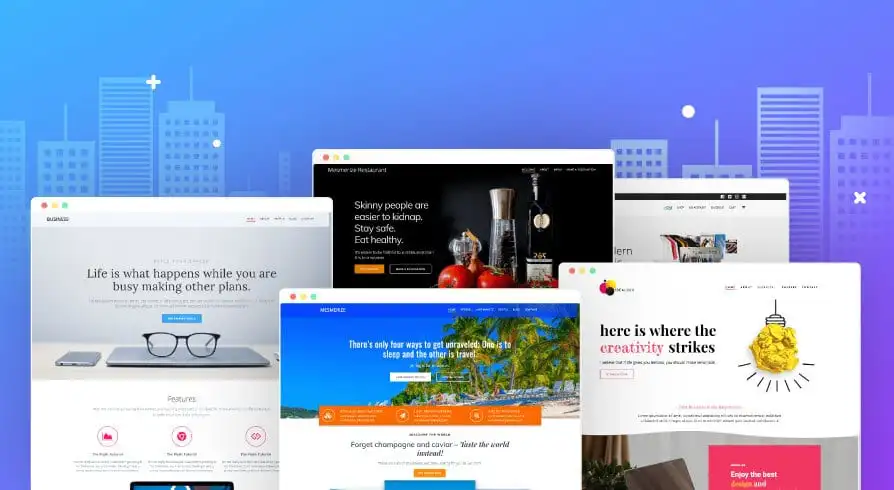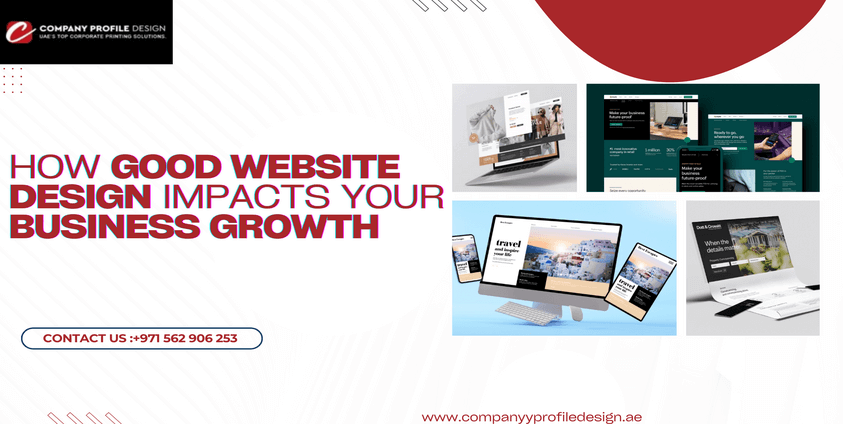In the internet era, an organisation’s website is the online storefront of the brand. Businesses, whether operating online or offline, without a properly planned website, will struggle to establish a professional image, gain trust, and maintain sustainable performance.
Great website design is more than just a matter of beauty. It is at the centre of the process of customer experience, search engine appeal, and conversion optimisation. In this blog, we will dive deep into the importance of having a good website for businesses.
7 ADVANTAGES OF WELL-DESIGNED WEBSITES
Here are some of the advantages you gain when your website is well-designed and provides a seamless user experience.
1) First Impression
‘First impression is the last impression’ is what you must have heard somewhere once in your life. Well, this is true for almost every aspect of your life, even for an online website. Your website is often the first interaction a user has with your brand, so making a good impression matters.
A website with a poor design would turn away users within seconds. Your website needs to have a clean, modern, and professional design that captivates visitors upon their visit and keeps them engaged for longer.
Studies show that it takes around 0.05 seconds to form an opinion of a website, and around 94% of first impressions are related to the design. A good first impression creates trust and sets a tone for future expectations. Many companies rely on hiring a company profile maker as part of the design team to help them establish an appealing brand that captures everyone’s attention at first glance.
2) Improved User Experience (UX)
A well-designed website matters, but having a great user experience changes the entire game. A website that is curated with a perfect design guides users easily, as they can find what they are looking for. To create an amazing user experience, you must ensure that you have a good UX.
A good UX focuses on
- Clear layout and structure
- Intuitive navigation menus
- Fast loading times
- Mobile responsiveness
- Readable typography
- Accessible colour scheme

Just like in the given example of Airbnb, having an enhanced UX, businesses can reduce the bounce rate, increase the time spent on the site, and boost overall customer satisfaction. This all contributes to higher engagement and conversion rates.
3) Develops Trust and Credibility
Credibility and trust play a crucial role in business development, as they can be significantly influenced by a well-designed website. Customers in the digital age tend to judge a company’s reliability based on its online presence.
Having a professional-looking website with good graphics, secure SSL encryption, accurate contact details, and extensive information, such as about us and policy pages, indicates that it is a legitimate and honest business.
This confidence may also be strengthened by incorporating customer reviews and testimonials, as well as prominently displaying trust badges. Also, the absence of mistakes and consistency in branding contribute to building authority and professionalism. As long as users feel safe and confident with the presentation and functionality of the site, there is a greater possibility that they will read more about the business, buy products, or place enquiries.
4) Better Search Engine Visibility (SEO)
Having a good website design is intertwined with effective search engine optimisation (SEO). Search engines like Google favour websites that are user-friendly and technically sound. SEO-friendly designs can enhance your website’s ranking, leading to increased organic traffic and more leads.
Elements in your design that support SEO are:
- Clean and semantic HTML code
- Optimised image and multimedia
- Fast page loading time
- Responsive mobile design
- Structured content with a heading and internal links
- Proper URL structures and metadata
To improve their website’s ranking and visibility, many businesses seek professional help from a website design company. They reduce the burden on the company, allowing it to focus on other internal and external operations.
5) High Conversion Rates
The ultimate goal of a website is to convert visitors into customers. Here are some of the ways a great website design can help with that.
| Elements of Website Design | Explanation | Impact on Conversion Rates |
| Clear Call To Actions (CTA) | CTA’s like “Buy Now” or “Click Here To Subscribe” are placed strategically to guide users to take action. | Increases lead generation and sales by persuading users to perform a desired activity. |
| Visually Highlighted Products | Key services or products are showcased using attractive visuals, banners, or featured sections. | This effectively captures the user’s attention and increases the likelihood of the product being purchased. |
| Minimal Clutter | Ensure the design is minimal and avoids any unnecessary elements that could distract or overwhelm users. | Maintains focus on the important Content and CTA’s, reducing bounce rates. |
| Responsive & Fast Design | A site that loads very fast and adjusts easily to any form of electronic device. | Enhance accessibility to keep users engaged and increase the likelihood of conversion into customers. |
| Persuasive Content Layout | The website has compelling headings, short paragraphs, bullet points, & value propositions. | Enhances readability and facilitates rapid benefit comprehension for consumers, promoting conversions. |
| Trust Signals | This includes various testimonials, customer reviews, & certifications. | Increases trust, assuring consumers that they can divulge payment or personal information. |
6) Mobile Responsive Equals More Traffic
As mobile traffic constitutes more than half of worldwide internet usage, mobile responsiveness becomes a non-negotiable characteristic. It features a mobile-responsive design that ensures your site fits any screen size or device, providing a consistent user experience.
Failing to mobile-optimize your website may also damage your visibility and traffic, as Google prioritizes the first mobile-friendly sites in search rankings. A good design is the aspect that makes your site both usable and visually appealing on smartphones and desktops.
7) Brand Consistency & Identity
Your website is the most critical part of reinforcing your brand’s identity. A consistent design across all web pages strengthens brand recognition and builds trust over time. A good design consists of:
- Consistent use of colours, logos, and fonts
- The tone of voice that matches your personality
- Cohesive style across imagery and layout
- Unified messaging across all pages
This consistency enhances customer loyalty and makes your business more memorable, ultimately leading to long-term customer relationships.
FREQUENTLY ASKED QUESTIONS
Q-Can businesses make websites without coding?
Yes, many organisations have websites made from platforms such as Wix, WordPress, and Squarespace. They have drag-and-drop tools that do not require coding.
Q-How can I measure my website’s performance?
You can use a tool such as Google Analytics to track traffic, bounce rate, and conversion goals.
Q-Do I need a blog for my business website?
Having a blog on your business website can be highly beneficial, as it enhances SEO, showcases your expertise, and keeps customers engaged.
ELEVATE YOUR BUSINESS WITH A GREAT DESIGN
A well-designed website provides a strong competitive edge by helping a business to stand out in a crowded marketplace. They offer visual identity, smooth functionality, faster load times, and a better overall user experience compared to poorly designed websites. Clear navigation, engaging content, and mobile responsiveness increase the likelihood of visitors staying and converting. Businesses still underinvest in design, so those that prioritise it can attract customers, gain market share, and build long-term brand loyalty.
